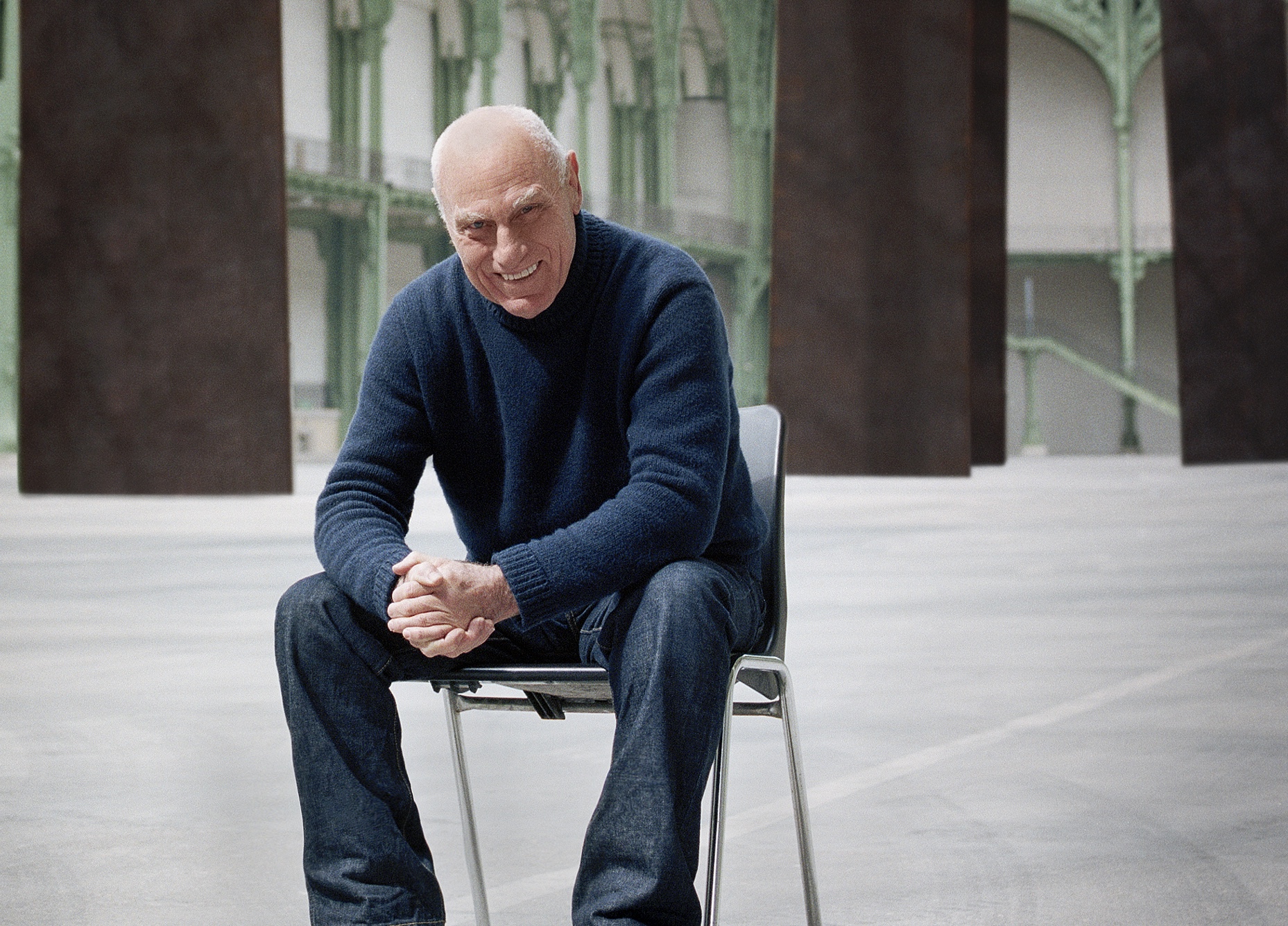Artist Richard Serra, whose monumental inhabitable sculptures warp our sense of space and time, died at his home in Long Island in New York on Tuesday, March 26. He was 85 years old and the cause was pneumonia, his lawyer John Silberman told the New York Times.
Serra was born in San Francisco in 1938 and earned a degree in English from the University of California, Santa Barbara before pursuing painting at the Yale School of Art and Architecture, notably under the mentorship of Bauhaus alumni Josef Albers. Despite this foundational training in two dimensions, Serra came to be celebrated for his sculptural works, in particular his massive installations crafted of industrial cold rolled steel that has been gently tilted or elegantly coiled into spirals. Hefty and imposing, at once aloof and inviting, they evoke sublime universes waiting to be discovered rather than standalone works meant to be viewed from a distance.

The artist made his home in New York City in the mid-1960s, when Minimalism was gaining steam as a cool alternative to impassioned Abstract Expressionism. Unlike his contemporaries, however, Serra opted for the gritty and process-based over the slick and precise. It was in this period that he produced his so-called “Verb List,” jotting down 54 actions such as “twist,” “crumple,” “rotate,” and “stretch” and promising to subject his art materials to every single one.
Today, a cursory search for “Richard Serra” on social media yields an endless stream of selfies and reverential, slow-panning videos, many of them shot at Dia Beacon, where the artist’s Torqued Ellipses (1996–2000) and other works are on long-term view. But these pieces were not always so well-received. At 12 feet high and 120 feet long, the rusty plate of weathering steel titled “Tilted Arc” was met with reactions ranging from dismay to fury when it was unveiled in Manhattan’s Foley Federal Plaza in 1981. Nine years and a contentious lawsuit later, the artwork was removed to the relief of hundreds of government workers who had petitioned for its withdrawal, stored away and never shown publicly again.

Critics have made much of the relationship between Serra’s use of scale and his work’s visual impact. Hyperallergic contributor David Carrier characterized Serra’s 50-ton Forged Rounds (2019) as “the ultimate billionaire’s art,” adding that they “are luxuries because of their unwieldy weight.” In one instance, the sheer mass of one of these gargantuan pieces — arguably the very basis of their appeal — resulted in the death of a worker at the Walker Art Center in Minneapolis, Minnesota in 1971. (The fabricators, and not the artist, were ultimately found responsible.)
Serra created works on paper throughout his practice, using mostly black oilstick and crayon to engage in frenzied, monochromatic mark-making that left some of us who adored his sculptures feeling disillusioned and confused. Still, the artist stood by these gestures, and the rich material works are a testament to the artist’s rebellious spirit.
Perhaps Serra’s most underrated work is his short video Television Delivers People (1973), produced in collaboration with Carlota Fay Schoolman. The seven-minute piece, a critique of mass media in the style of a public service announcement set to an uncanny soundtrack of elevator music, was broadcast to the public — a successful instance of insertion into mainstream channels to subvert and unsettle them.
“His work is involved quite literally in the world,” Hal Foster said in an interview with Hyperallergic Editor-in-Chief Hrag Vartanian in 2019. “The key moment is when he breaks out into space, first into the gallery and then into the city and then the landscape, and embeds his works.”
“That’s where I think he comes to square the circle, the old opposition of autonomy versus engagement,” Foster continued. “In a way, he plunges abstraction back into the world, and thereby complicates it.”



